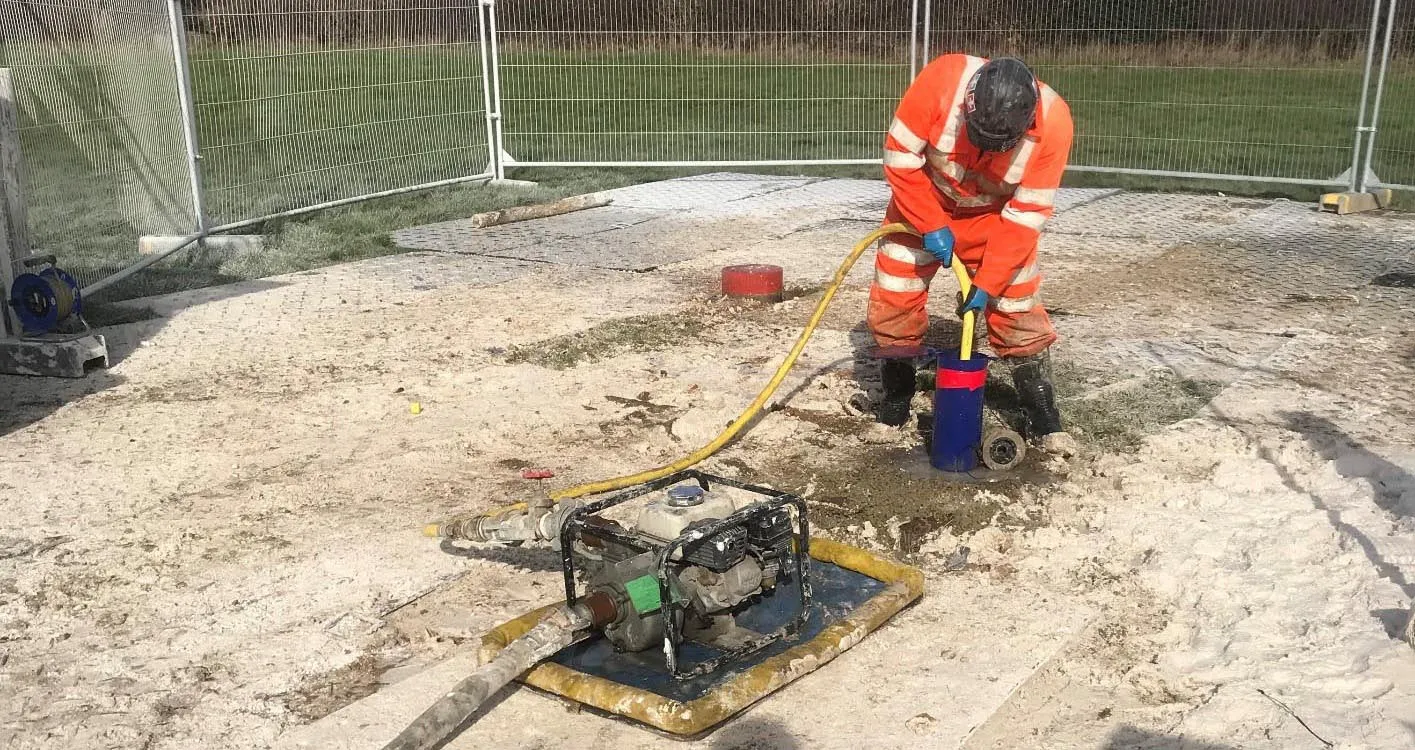Falling Head Testing
All falling head testing is undertaken in accordance with BS EN ISO 22282 2012. Equipment utilised is; a downhole datalogger, barometric datalogger, flow meter, water pump and pipework to suit.
A falling head test is undertaken to determine the permeability of a well and is particularly useful when looking to determine a wells suitability as a soakaway. Water is placed into the well at a known rate and volume until the water level begins to stabilise, either at the top of the well or at a known level. At this point the water is shut off and the well is allowed to recover until it reaches its pre-test level.
Rising Head Testing
All rising head testing is undertaken in accordance with BS EN ISO 22282 2012. Equipment utilised is; a downhole datalogger, barometric datalogger, flow meter, borehole pump, pipework and riser to suit.
A rising head test is undertaken to determine the permeability of a well. A suitable submersible borehole pump is installed into a well and water is abstracted at a known rate and volume recorded. The water level is maintained for an agreed period of time and the well allowed to recover to its pre-test levels.
Constant Head Testing
All constant head testing is undertaken in accordance with BS EN ISO 22282 2012. Equipment utilised is; a downhole datalogger, barometric datalogger, flow meter, water pump and pipework to suit.
A constant head test is undertaken whereby the water level within the well is risen in 3 defined steps. The rate of water injected into the ground is measured and volume recorded. After the test is completed the water is shut off and the well is allowed to recover until it reaches its pre-test level.
Slug Testing
All slug testing is undertaken in accordance with BS EN ISO 22282 2012. Equipment utilised is; a downhole datalogger, barometric datalogger and slug.
A slug test is undertaken whereby a slug of known size and volume is quickly added to the water column within a well, allowed to stabilise and then quickly removed, all whilst being monitored by a datalogger. This method is useful for determining the hydraulic conductivity of the well.
